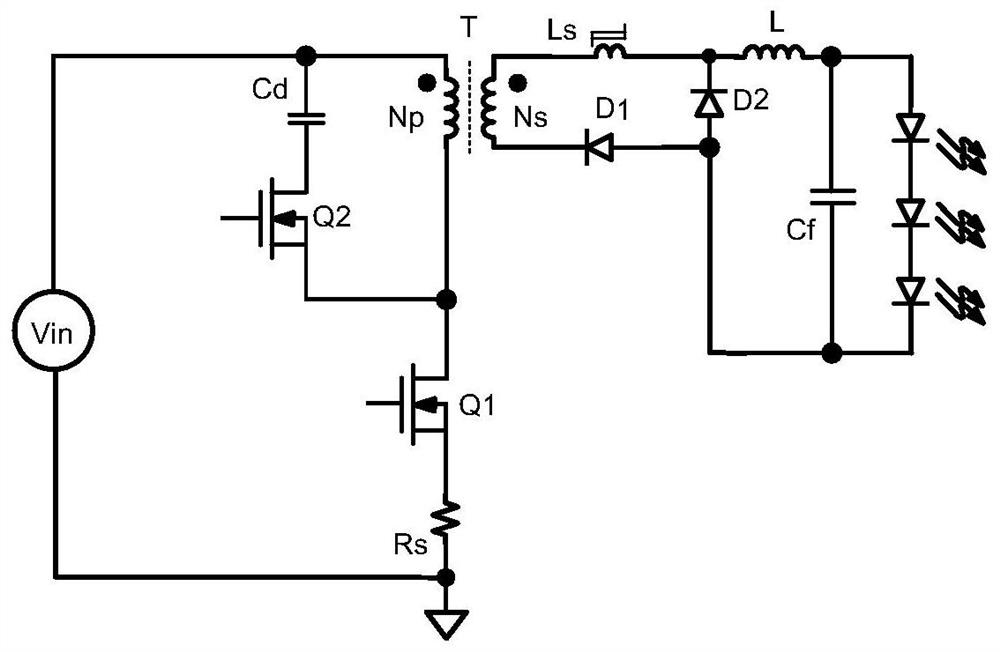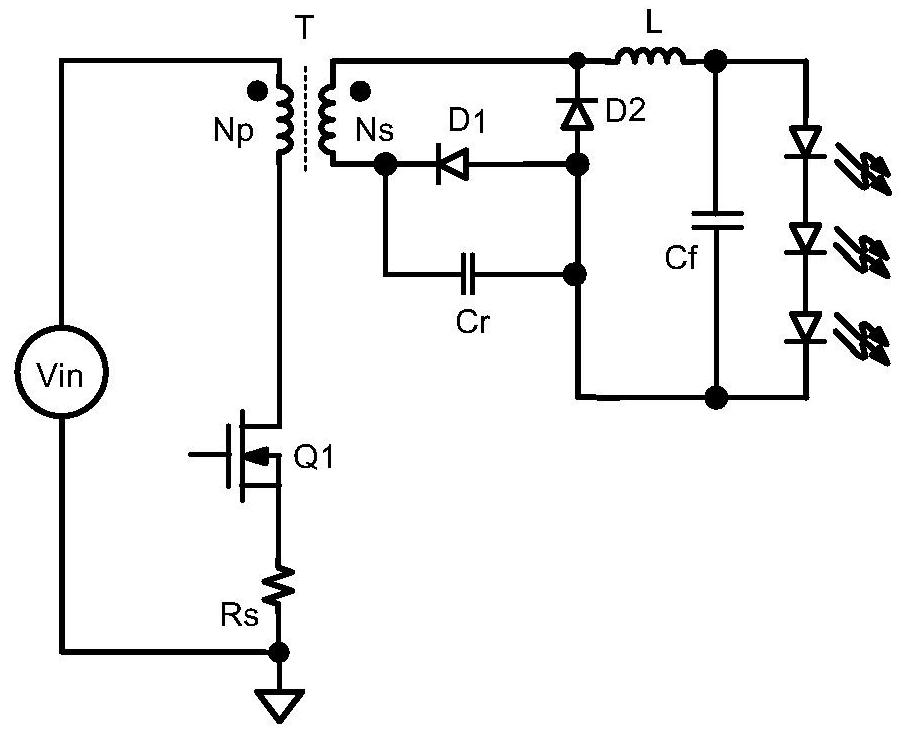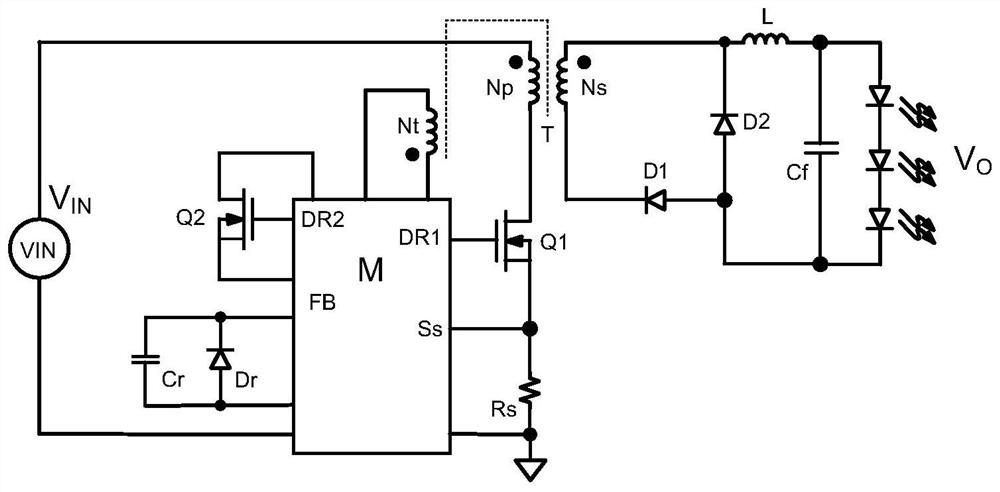Zero-voltage switch forward direct-current direct-current converter and control method thereof
A zero-voltage switching, DC converter technology, applied in the direction of converting DC power input to DC power output, regulating electrical variables, control/regulating systems, etc. Effective resonance reset and other problems, to solve the EMI problem, easy compensation, good stability
- Summary
- Abstract
- Description
- Claims
- Application Information
AI Technical Summary
Problems solved by technology
Method used
Image
Examples
Embodiment 1
[0078] The block diagram related to the detection resistor Rc and MOS transistor Q2 inside the functional module M is as follows Figure 5 shown. The functional module M includes a resettable integrator (hereinafter referred to as integrator), a comparison + limiter error amplification module, and a zero-crossing + delay module. The source of the MOS transistor Q2 is connected to the ground through the detection resistor Rc. The drain of the MOS transistor Q2 is connected to the same terminal of the reset winding Nt. The non-identical end of the reset winding Nt is connected to the ground through the resonant capacitor Cr. The parallel diode Dr is connected in parallel with the resonant capacitor Cr, and the anode of the parallel diode Dr is grounded. The output of the comparison + limiter error amplifier module is connected to the gate of the MOS transistor Q2. The feedback voltage of the detection resistor Rc is respectively used as the input signal of the resettable int...
Embodiment 2
[0085] compared to Figure 5 Specifically, the function module M omits a resettable integrator, and the function module M includes a comparison + limiter error amplification module, and a zero-crossing + delay module. Specific as Image 6 shown. The source of the MOS transistor Q2 is grounded. The drain of the MOS transistor Q2 is connected to the same terminal of the reset winding Nt. The non-identical end of the reset winding Nt is connected to the ground through the resonant capacitor Cr. The parallel diode Dr is connected in parallel with the resonant capacitor Cr, and the anode of the parallel diode Dr is grounded. The output of the comparison + limiter error amplifier module is connected to the gate of the MOS transistor Q2. The voltage of the resonant capacitor Cr is fed back to the output voltage by the voltage divider network formed by Ru and Rd as the input signals of the comparison + limiter error amplification module and the zero-crossing + delay module respec...
Embodiment 3
[0096] The functional module M is placed on the secondary side of the output transformer and according to the circuit of the aforementioned embodiment 2 ( Image 6 ) is realized; thus the voltage divider network formed by the reset winding Nt, the MOS transistors Q2, Ru and Rd and the detection resistor Rs are all on the secondary side. The feedback voltage of the detection resistor Rs represents the output inductor current; the voltage divider network composed of Ru and Rd feeds back the voltage Vcr of the resonant capacitor Cr. The voltage divider network composed of Ru and Rd feeds back through the FB terminal of the functional module M to control the MOS transistor Q2 together with the functional module M. In order to control the primary side MOS transistor Q1 to be turned on by the ZVS switch, a functional module M1 is added to the primary side of the output isolation transformer. In this way, the output information of the functional module M is isolated and coupled to the...
PUM
 Login to View More
Login to View More Abstract
Description
Claims
Application Information
 Login to View More
Login to View More - R&D
- Intellectual Property
- Life Sciences
- Materials
- Tech Scout
- Unparalleled Data Quality
- Higher Quality Content
- 60% Fewer Hallucinations
Browse by: Latest US Patents, China's latest patents, Technical Efficacy Thesaurus, Application Domain, Technology Topic, Popular Technical Reports.
© 2025 PatSnap. All rights reserved.Legal|Privacy policy|Modern Slavery Act Transparency Statement|Sitemap|About US| Contact US: help@patsnap.com



